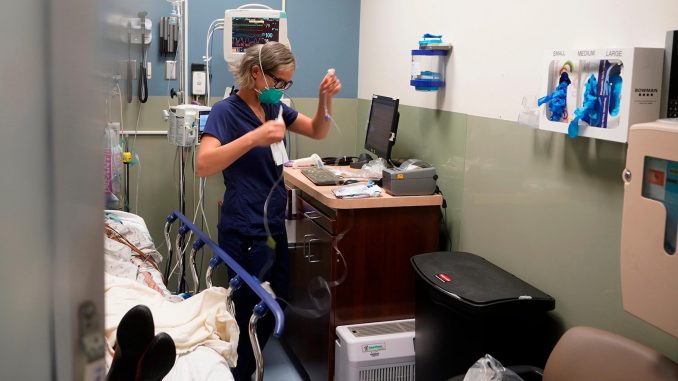
SACRAMENTO, Calif. — Doctors, hospitals and health insurance companies in California will be limited to annual price increases of 3% starting in 2029 under a new rule state regulators approved Wednesday in the latest attempt to corral the ever-increasing costs of medical care in the United States.
The money Californians spent on health care went up about 5.4% each year for the past two decades. Democrats who control California’s government say that’s too much, especially since most people’s income increased just 3% each year over that same time period.
The 3% cap, approved Wednesday by the Health Care Affordability Board, would be phased in over five years, starting with 3.5% in 2025. Board members said the cap likely won’t be enforced until the end of the decade.
A new state agency, the Office of Health Care Affordability, will gather data to enforce the rule. Providers who don’t comply could face fines.
“We want to be aggressive,” board chair Dr. Mark Ghaly said, while acknowledging that the cap “really translates into a major challenge” for the health care industry.
The vote is just the start of the process. Regulators will later decide how the cost target will be applied across the state’s various health care sectors. And enforcement will be progressive, with several chances for providers to avoid fines.
California’s health care industry has supported the idea of a statewide cost target but argued a 3% cap is too low and will be nearly impossible to meet. In December, the Center for Medicare and Medicaid Services said the cost to practice medicine in the United States would increase 4.6% this year alone.
The board based the target on the average annual change in median household income in California between 2002 and 2022, which was 3%. Dr. Tanya W. Spirtos, president of the California Medical Association that represents doctors, wrote a letter to the board noting that number is “artificially low” because it includes the years of the Great Recession, when income dropped dramatically. She said a better gauge would be looking at the past 10 years, when median household income increased an average of 4.1% per year.
Hospitals argue much of what they charge is outside of their control. More than half of hospitals’ expenses are salaries for workers, and many of those are set through collective bargaining agreements with labor unions. Plus, a new state law that takes effect this year will gradually increase the minimum wage for health care workers to $25 per hour.
More than half of California’s 425 hospitals are losing money, and many rural facilities are in danger of closing — prompting the state Legislature last year to approve an emergency loan program.
Carmela Coyle, president and CEO of the California Hospital Association, said when it comes to hospital finances, “the fat is already gone.” She said hospitals regularly perform complex procedures that save lives, including quadruple bypass surgeries.
“We’re fooling ourselves if we think that’s cheap or can be done less expensively,” she said.
Health care spending in the United States has more than doubled in the past two decades, reaching $4.5 trillion in 2022, according to the Centers for Medicare & Medicaid Services. Eight other states have set statewide cost targets for their health care industries. What makes California’s cap different, experts say, is both the staggering size of the state’s health care industry and its plan to enforce the limit with fines.
Health providers could exceed the cap if they have a good reason, including giving raises to health care workers. Those issues have yet to be worked out and will be considered on a case by case basis.
California has greatly expanded access to health insurance in recent years, including using taxpayer money to provide deep discounts for some middle-income earners and offering free coverage to all low-income adults regardless of their immigration status. State lawmakers have resisted more ambitious actions, including a single-payer system.
“Making quality health care affordable is a top priority for our administration,” Democratic Gov. Gavin Newsom said in a statement released by his office. “This action is a crucial first step forward in our efforts to reign in outrageous heath care costs and make health care more affordable.”
Wednesday’s vote was the state’s first foray into tackling health care spending in California, which reached $405 billion in 2020, or $10,299 per person — the 22nd highest in the nation. Still, costs have increased greatly for people who get health insurance through their job. In 2006, just 6% of California workers who had deductibles of $1,000 or more. By 2020, it was 54%.
“We have a system right now that the incentives are not about getting the most cost efficient service,” said Anthony Wright, executive director of Health Access California who advised the board on the new cost limit. “This is an attempt to try to have that incentive into a market that is more about getting bigger than about getting better.”


Be the first to comment